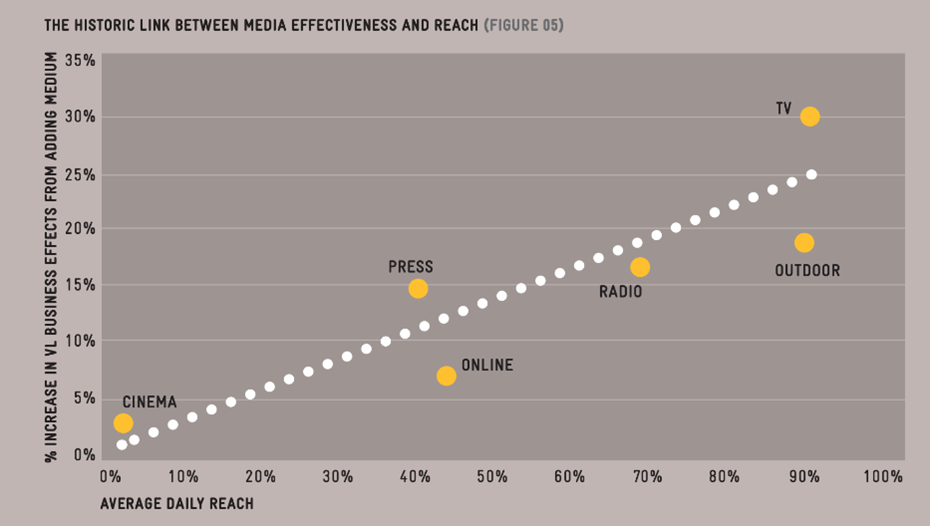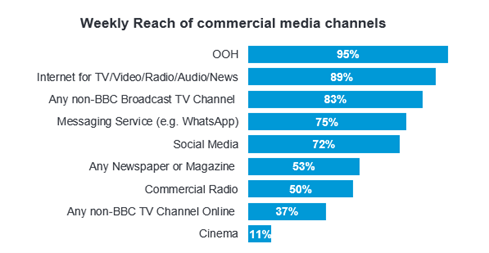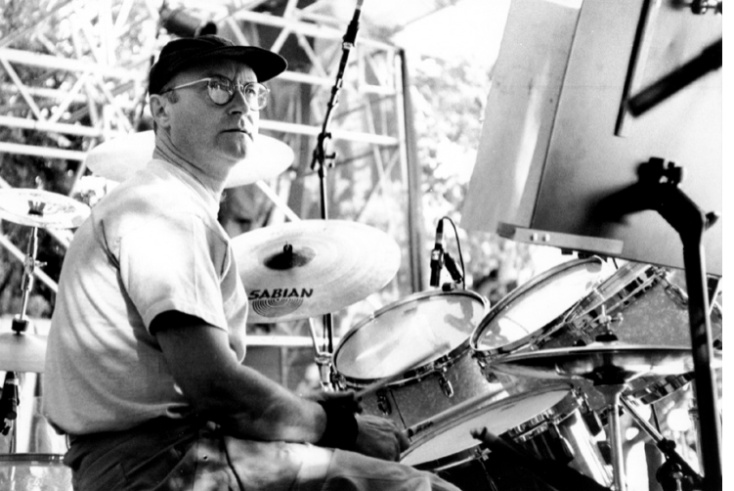Opinion
Clear Channel strategist Colin Horan argues turbulent times present a golden opportunity for brands, and broadcast reach is more important now than ever before.
When English band Genesis emerged in the late sixties spearheaded by the enigmatic Peter Gabriel, they developed a cult following as pioneers of progressive rock. Up until 1975, they had enjoyed moderate success, but disaster struck when Gabriel parted ways with the band, leaving behind a staggering debt of nearly half a million pounds.
In the aftermath of Gabriel’s departure, their very own drummer, Phil Collins, stepped forward to seize the coveted frontman role.
Collins was presented with a dilemma. Should he opt to honour the band’s distinctive sound, thus appeasing their loyal fanbase and safeguarding against the encroachment of bands like Led Zeppelin and Pink Floyd? Or could this be an opportunity for Genesis to cast their musical net wider and attract a broader audience?
Collins opted for the latter, and the rest is history. Genesis became one of the world’s most successful rock bands, amassing around 150 million album sales worldwide, and Collins himself emerged as a formidable solo artist, celebrating a wealth of chart-topping singles on both sides of the Atlantic.
Land of confusion
Now, you might be wondering, what does this riveting story of Chiswick’s most famous drummer have to do with marketing? Well, it circles back to an age-old question that marketers continually grapple with: should they prioritize fostering loyalty or expanding market penetration?
Those who follow the work of Byron Sharp and the Ehrenberg-Bass Institute will firmly endorse the belief that growth is propelled by penetration. Casting the net wide to reach as many potential customers as possible has become the default position for many brands in recent years, and rightly so, because there is a ton of evidence to prove its effectiveness.
Most notably from Binet and Field (not members of Genesis I should add), whose analysis of the IPA database makes a compelling case for the benefits of media channels that can reach as many people as possible, such as TV and out-of-home (OOH). Notably, the results revealed a substantial correlation between reach and positive business outcomes.

Source: Binet & Field – Media in Focus 2017
So take a look at me now
But here’s the burning question: do these steadfast rules still hold their ground when the going gets tough? Is it now time to batten down the hatches and fire up the loyal-o-meter, or should we channel our inner Phil Collins and appeal to a broader market?
I would strongly side with Phil. In fact, I would argue that broadcast reach is more important than ever right now.
The cost-of-living crisis has undeniably left its imprint on consumer shopping behaviours. In a recent study by market research company Mintel, three-quarters of consumers have adjusted their shopping practices in response to these economic challenges.
Driven by a quest for value, shoppers are actively seeking alternatives and even switching their repertoire of stores. This seismic shift away from ingrained routines presents a golden opportunity for brands to make their mark.
Behavioural science expert Richard Shotton advocates for marketers to focus on targeting these changing routines, which he calls “life events”.
Traditionally, we’d perhaps associate this with a more common event, such as moving house or changing jobs, but the current landscape bears striking similarities to Shotton’s theory. He suggests that in these moments, marketers “will find consumers more open to their messages than normal” because these events can disrupt habitual patterns of behaviour.
Podcast: Richard Shotton on why reframing is better than convincing
These turbulent times undoubtedly present major challenges for marketers across the board, but by obsessing solely on the risk of losing share, you could miss the opportunity to capitalise on increasing your penetration.
With the light buyer more open to change, reaching all potential customers has never been more important and selecting the right media channels that can deliver broadcast reach is key.
This is why OOH has been a go-to for brands navigating the cost-of-living crisis this year, with its ability to reach 97% of the UK population every fortnight, and strength in connecting with sought-after 18-34s, who have become more difficult to reach following the fragmentation of broadcast TV.

Source: IPA, Touchpoints, 2023; Route 2023
Both sides of the story
Often referred to as the oldest medium with the brightest future, OOH growth is expected to reach 4.9% this year.
The proliferation of digital out-of-home (now reaching 70% of the UK each week in its own right), and sophisticated planning tools have given the channel a markedly smarter approach to reach.
The ability to understand audience mobility using near real-time data, and flexibly deliver contextual messages at any given moment makes OOH more effective than ever (up to 32% according to a recent industry study). This enables a brand to build memory structures with their audience around specific category entry points, at scale.
It’s OOH’s unique context in the real world, which provides the perfect backdrop. Something I often simplify as “real-world location x real-world moment”.
A brand like Guinness, for example, can build stronger connections with summer drinking occasions by delivering impactful messages in key drinking hubs (real-world location) during the evenings and weekends when the sun is shining (real-world moment).
Planning OOH campaigns in this way has become commonplace because, as Byron Sharp explains it, mental availability is more than just awareness (or reach), it’s about the probability that your brand will be thought of in buying situations.
OOH delivers on both sides of the story.
 Colin Horan is strategic partner for FMCG at Clear Channel UK.
Colin Horan is strategic partner for FMCG at Clear Channel UK.
Adwanted UK is the trusted delivery partner for three essential services which deliver accountability, standardisation, and audience data for the out-of-home industry.
Playout is Outsmart’s new system to centralise and standardise playout reporting data across all outdoor media owners in the UK.
SPACE is the industry’s comprehensive inventory database delivered through a collaboration between IPAO and Outsmart.
The RouteAPI is a SaaS solution which delivers the ooh industry’s audience data quickly and simply into clients’ systems.
Contact us for more information on SPACE, J-ET, Audiotrack or our data engines.







 Colin Horan is strategic partner for FMCG at Clear Channel UK.
Colin Horan is strategic partner for FMCG at Clear Channel UK.